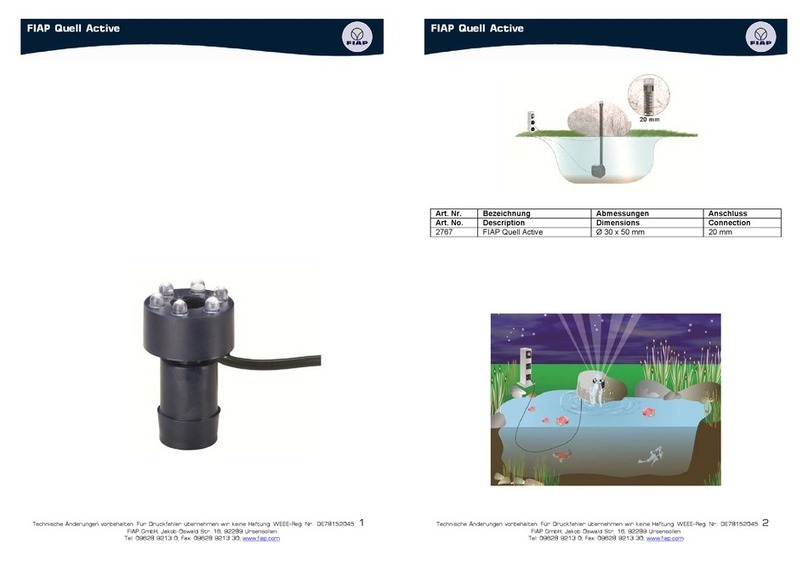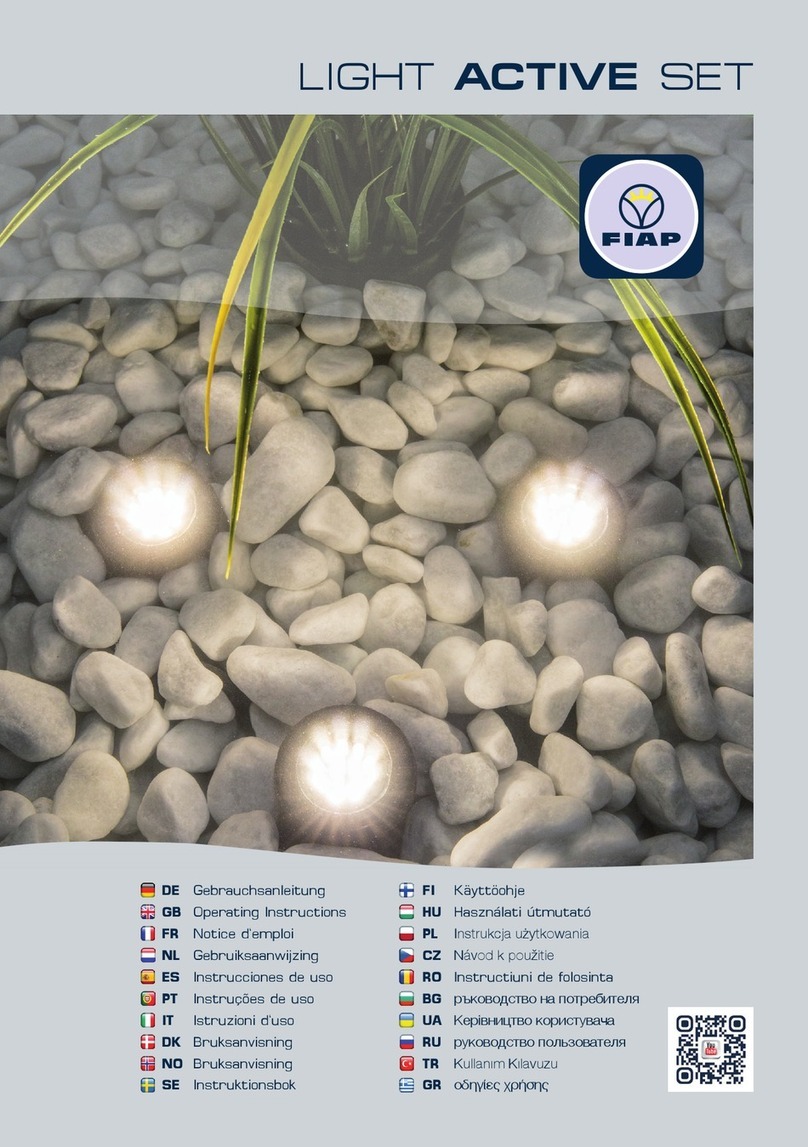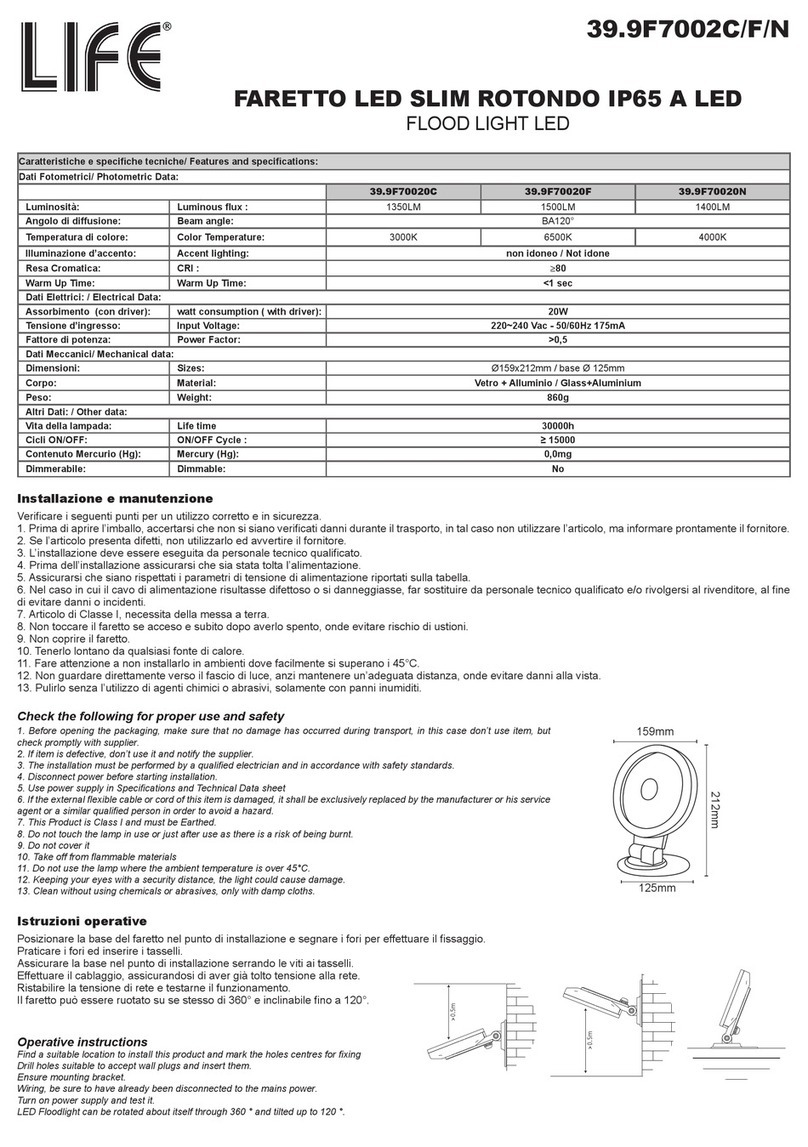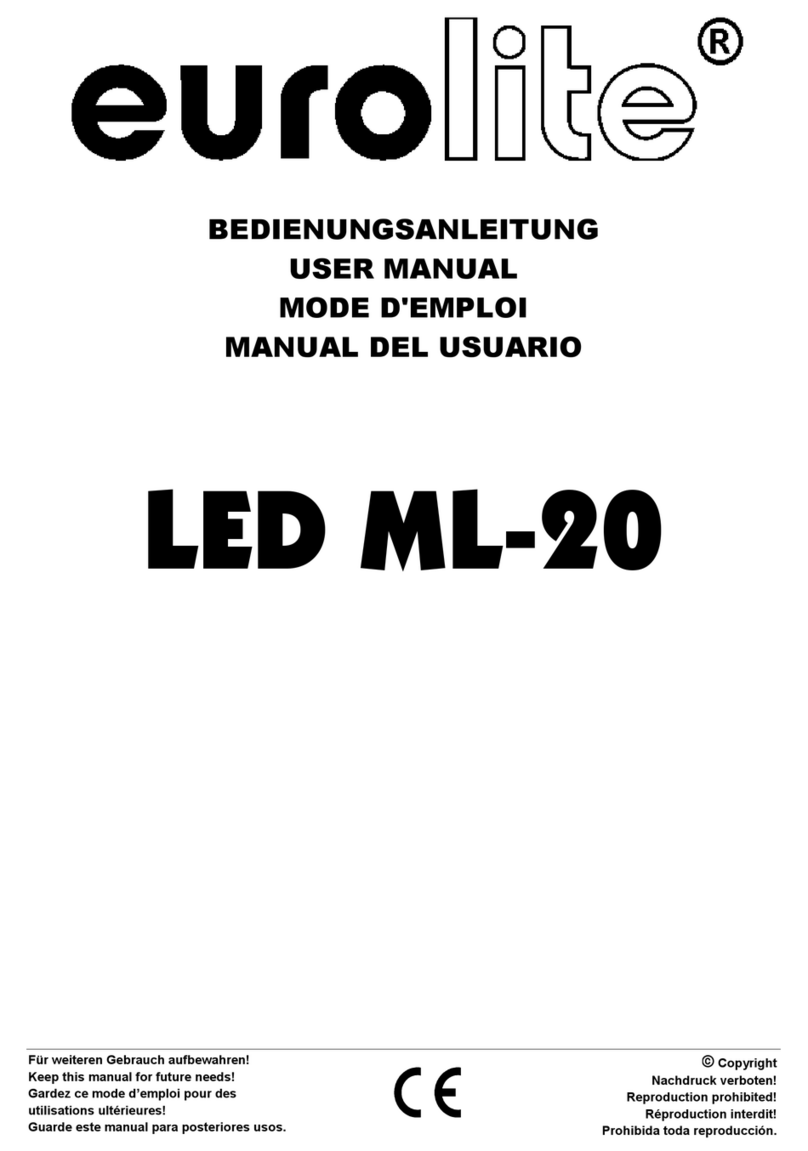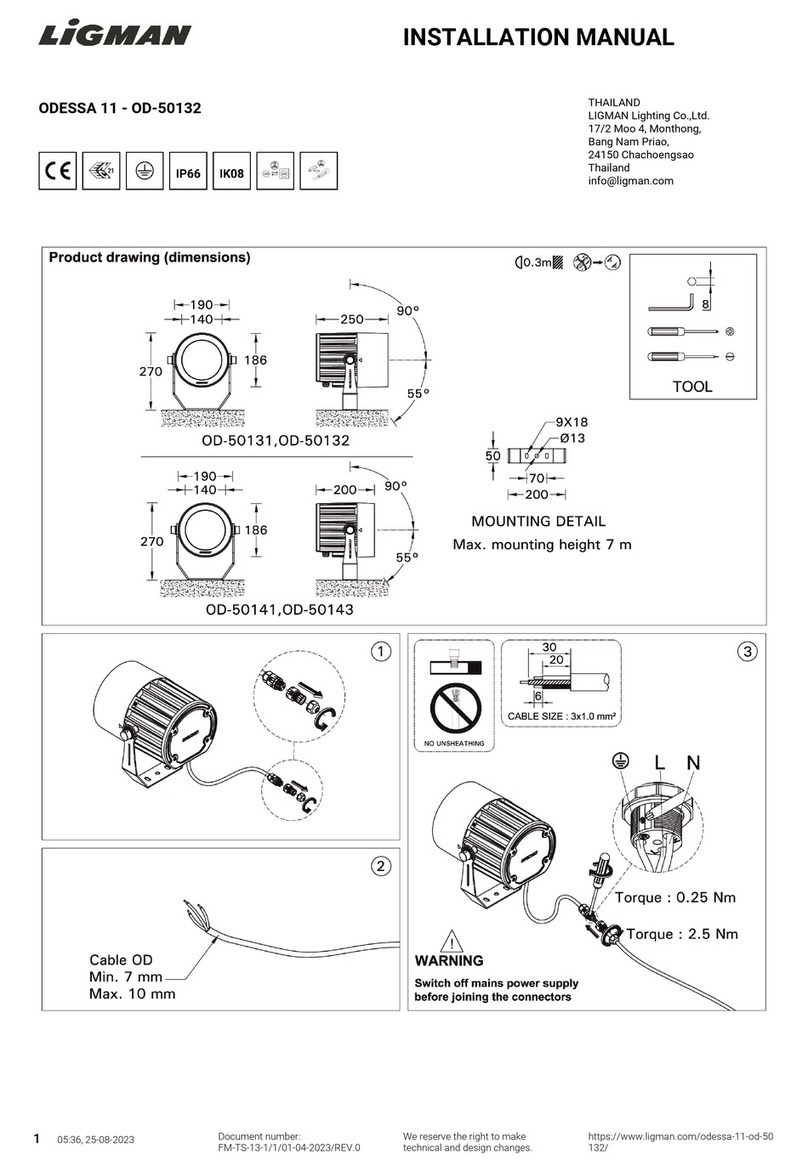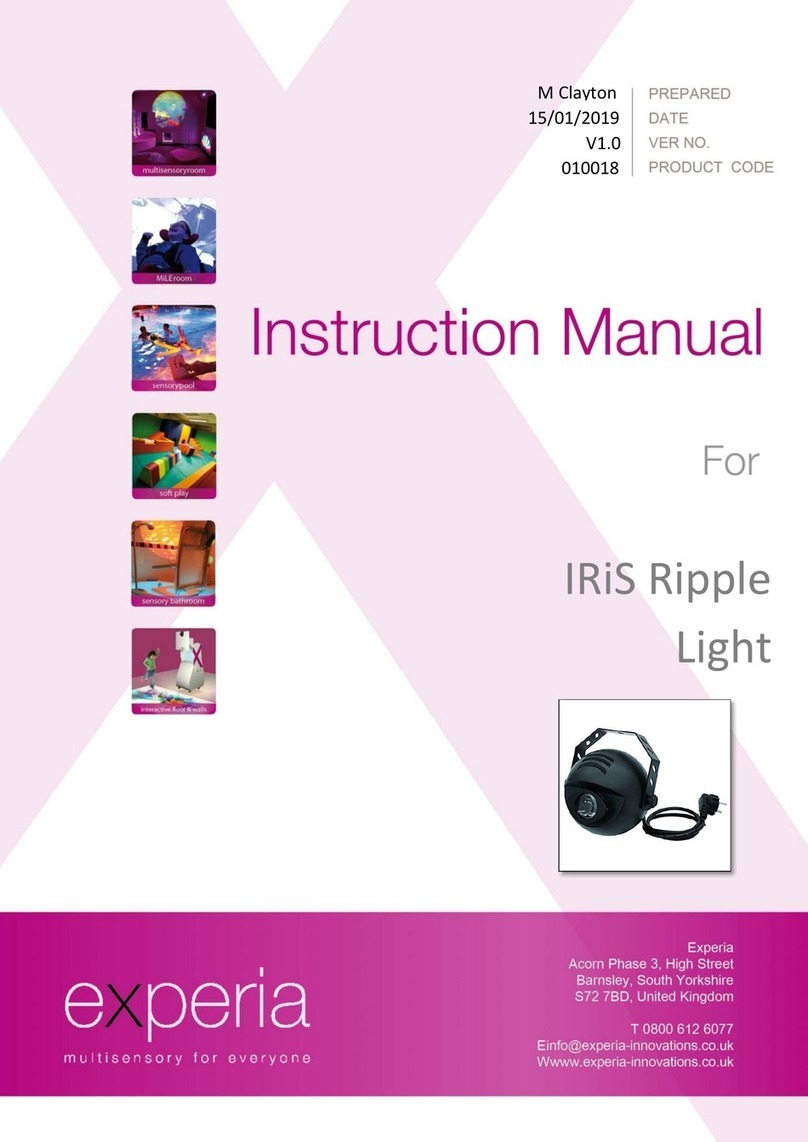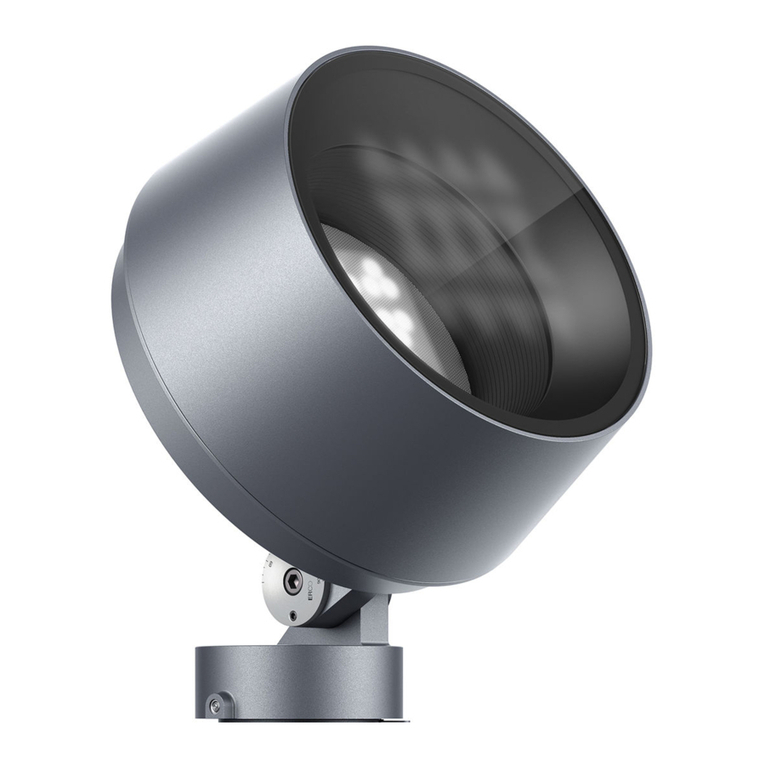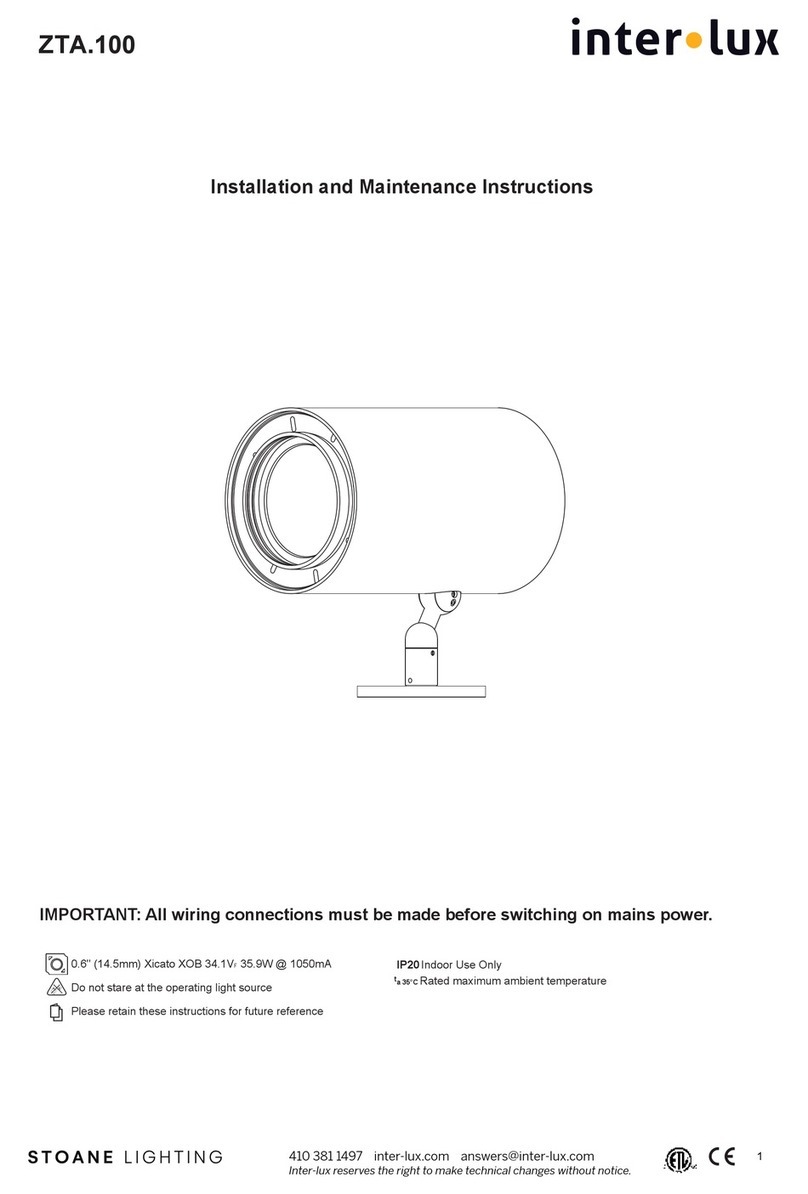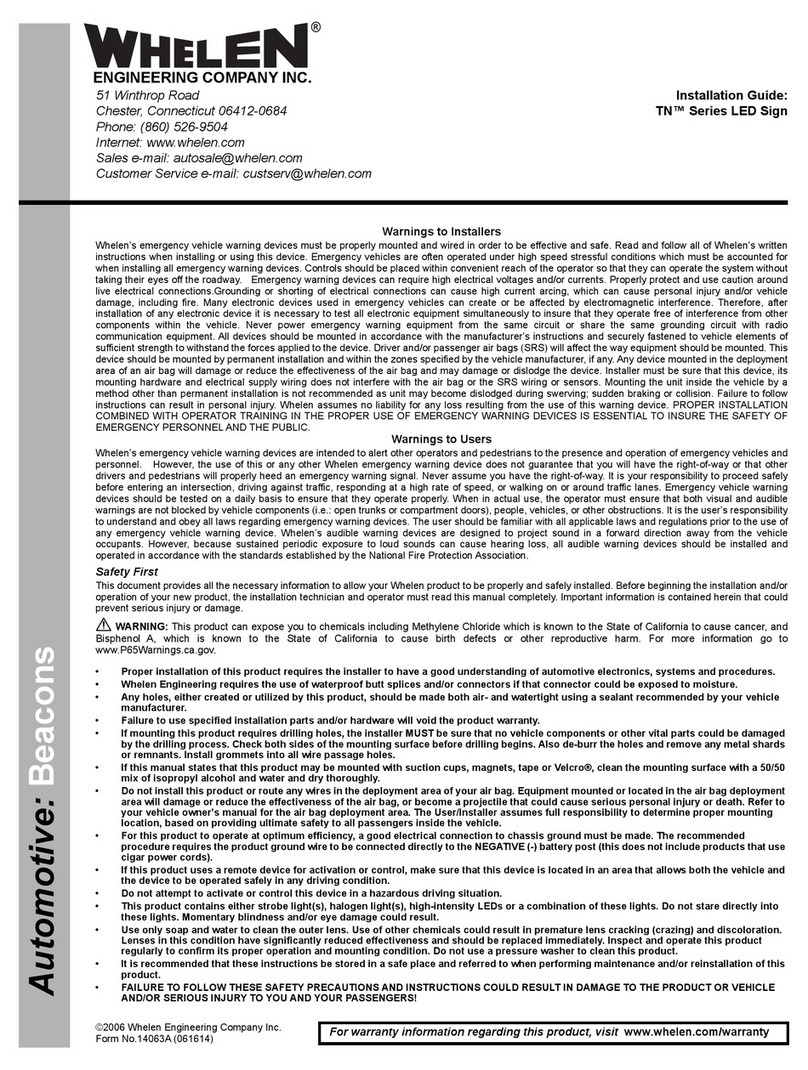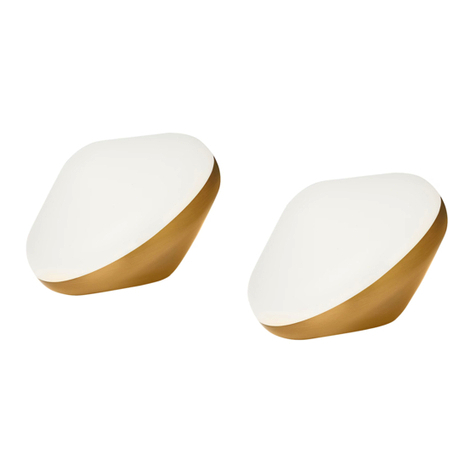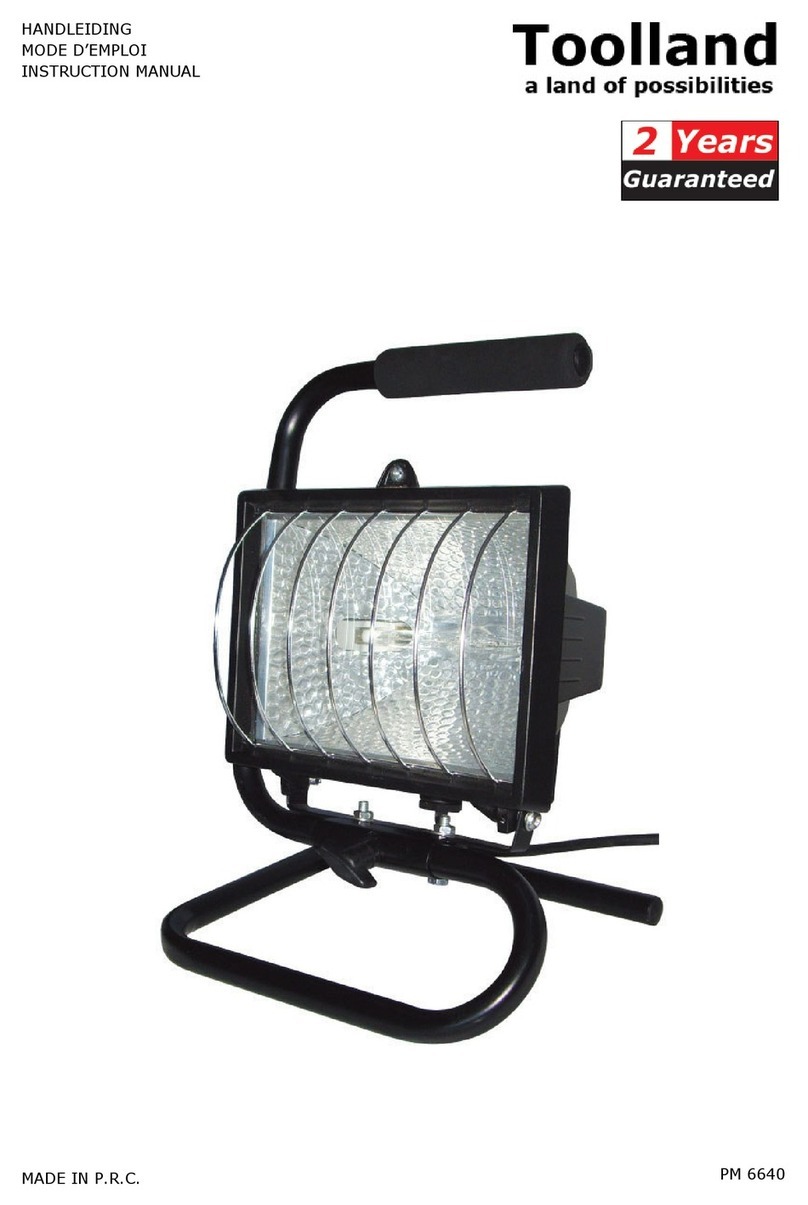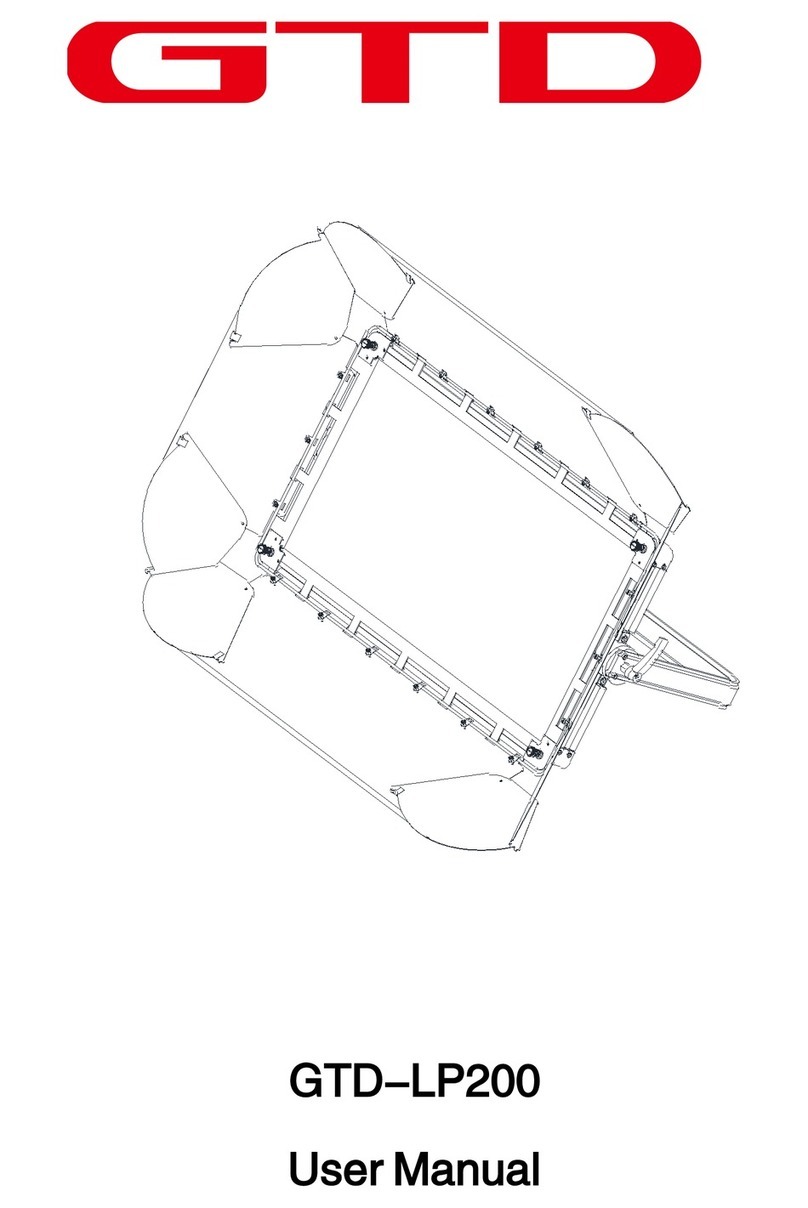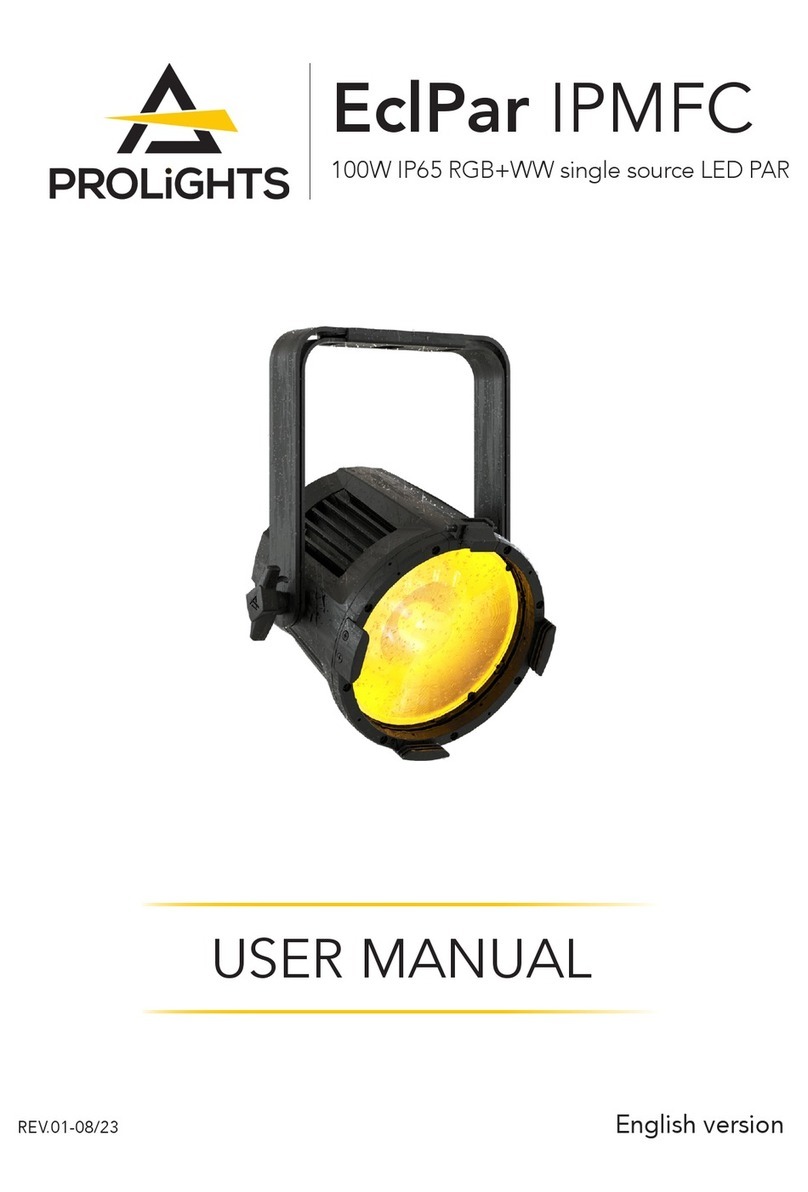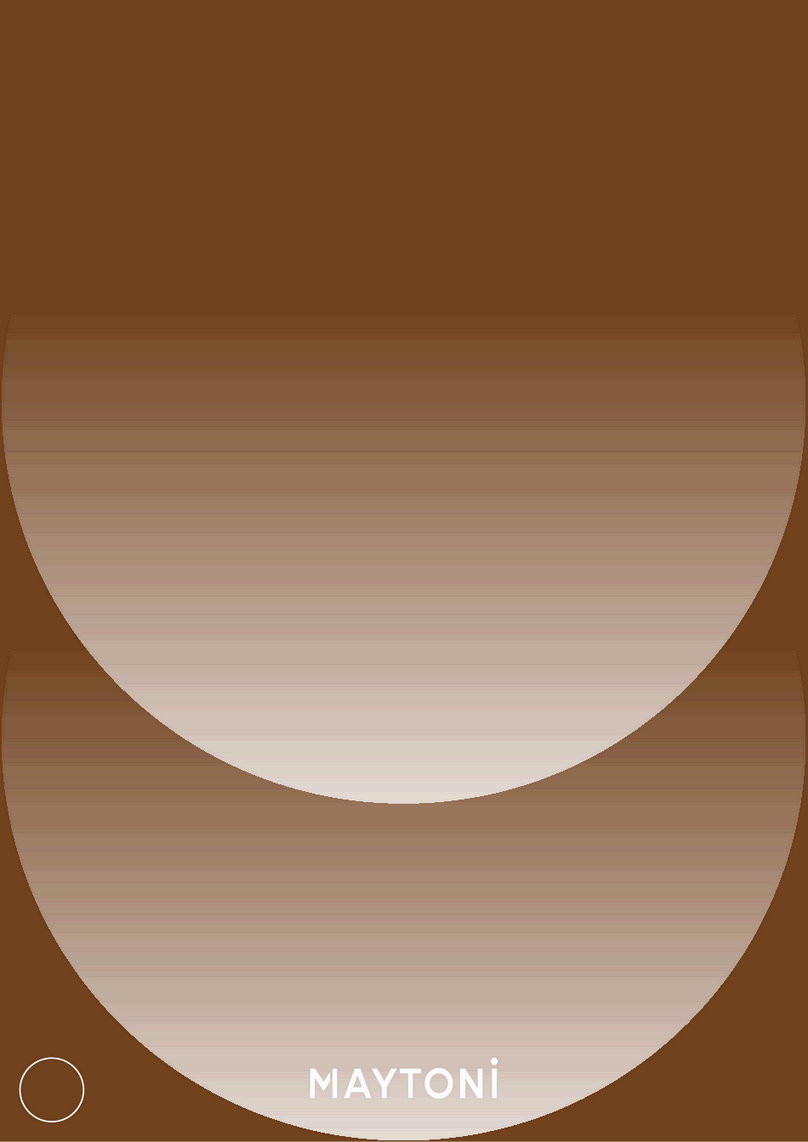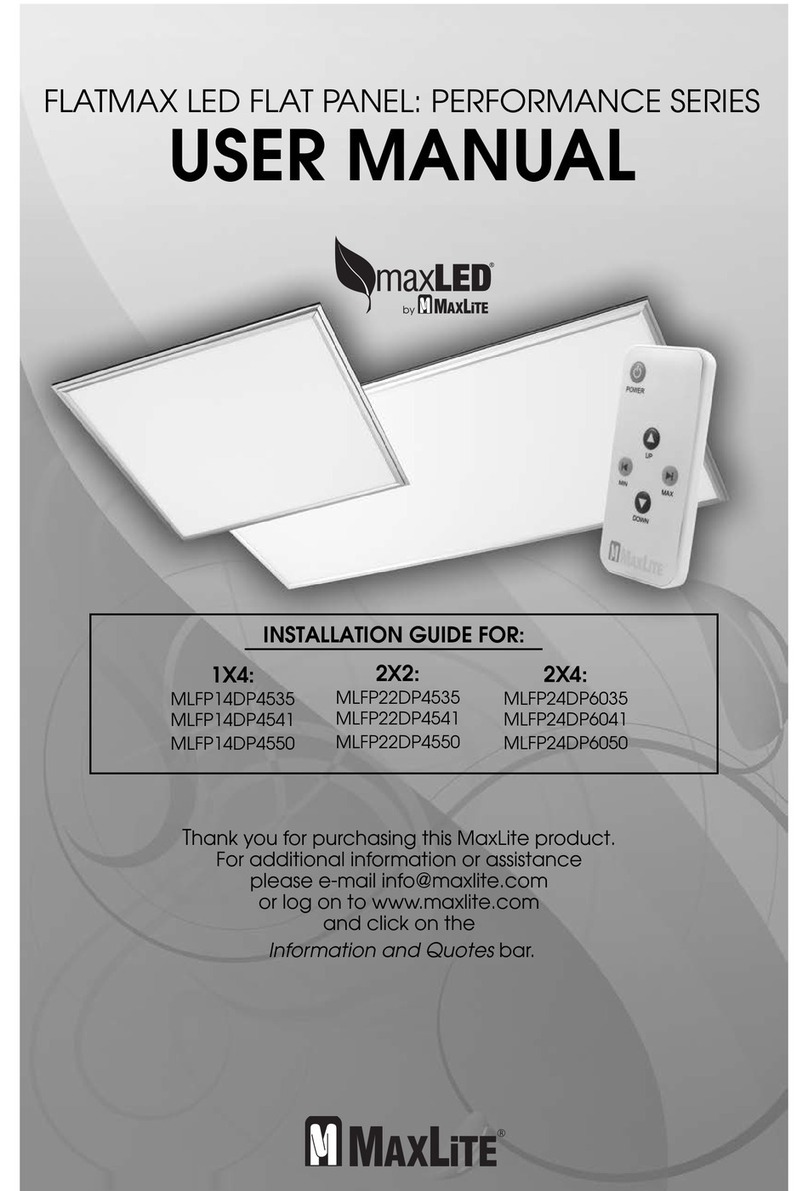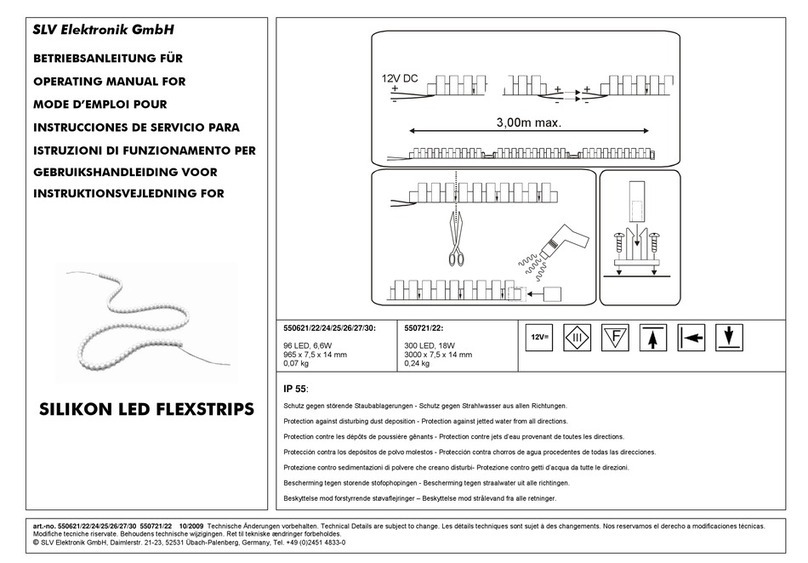Fiap MyPond Active 200 User manual

FIAP MyPond Active
Technische Änderungen vorbehalten. Für Druckfehler übernehmen wir keine Haftung. WEEE-Reg. Nr.: DE78152045 1
FIAP GmbH, Jakob Oswald Str. 16, 92289 Ursensollen
Tel: 09628 9213 0; Fax: 09628 9213 30; www.fiap.com
FIAP MyPond Active
Technische Änderungen vorbehalten. Für Druckfehler übernehmen wir keine Haftung. WEEE-Reg. Nr.: DE78152045 2
FIAP GmbH, Jakob Oswald Str. 16, 92289 Ursensollen
Tel: 09628 9213 0; Fax: 09628 9213 30; www.fiap.com
Art.Nr Bezeichnung Inhalt in Liter Abmessung mm
Art.No. Specification Volume in liter Dimension mm
3960 FIAP MyPond Active 200 200 1.400 x 1.040 x 350
3961 FIAP MyPond Active 500 500 1.950 x 1.100 x 400
3962 FIAP MyPond Active 750 750 2.000 x 1.560 x 600
3963 FIAP MyPond Active 900 900 2.400 x 1.520 x 520

FIAP MyPond Active
Technische Änderungen vorbehalten. Für Druckfehler übernehmen wir keine Haftung. WEEE-Reg. Nr.: DE78152045 3
FIAP GmbH, Jakob Oswald Str. 16, 92289 Ursensollen
Tel: 09628 9213 0; Fax: 09628 9213 30; www.fiap.com
DE
Die FIAP MyPond Active Teichschale ermöglicht Ihnen auf einfachste Art das Anlegen eines Teiches und lässt sich
leicht und problemlos in Ihrem Garten integrieren. Tief- und Flachwasserbereiche sowie eine Sumpfzone sind schon
fix und fertig vorgesehen. Alles, was für Sie zu tun bleibt, ist eine solche Teichschale einzubauen – das geht ganz
einfach und braucht nur wenig Zeit.
Spaß und viel Freude sind garantiert.
Hier empfehlen wir Schritt für Schritt Ihnen das Anlegen einer FIAP MyPond Active Teichschale:
1. Standort der Teichschale vorbereiten
Bevor Sie mit dem Ausheben der Teichgrube beginnen, stellen Sie die Teichschale auf den geplanten Standort.
Markieren Sie anschließend die Umrisse der Schale und der verschiedenen Teichzonen mit Sand oder einer Schnur.
Achten Sie darauf, dass die Teichgrube 150 bis 200 mm größer und tiefer wird, als die Form der Teichschale vorgibt.
2. Teichgrube ausheben
Nachdem Sie die Teichform abgesteckt oder markiert haben, legen Sie die Teichschale auf die Seite und beginnen
mit dem Aushub. Stechen Sie dabei zuerst die entsprechenden Markierungen des Teiches mit einem Spaten ab.
Beim Graben arbeitet man sich von innen nach außen vor. Heben Sie die Teichgrube so aus, dass es der Form der
Teichschale entspricht. Graben Sie die unterschiedlichen Ebenen ca. 150 bis 200 mm breiter und tiefer als die
Teichschale groß ist.
3. Teichschale einsetzen
Ist die Teichgrube fertig ausgehoben, setzen Sie die Teichschale zunächst in die Teichgrube um zu prüfen, ob der
Aushub passt. Oftmals passt es nicht immer gleich genau. Nehmen Sie die Teichschale wieder heraus und arbeiten
Sie die Stellen entsprechend nach. Entfernen Sie spitze Steine und Wurzeln, damit die Teichschale später nicht
beschädigt wird.
Hat die Grube die richtige Form erreicht, bedecken Sie anschließend alle waagerechten Flächen mit einer ca. 100 bis
150 mm dicken Sandschicht. Dadurch wird zum einen die Ausrichtung der Teichschale vereinfacht und zum anderen
eine optimale Platzierung erzielt. Danach kann die FIAP MyPond Active Teichschale eingesetzt und mit einer
Wasserwaage ausgerichtet werden.
PONDOLINO® - Tipp:
Befüllen Sie dazu den Teich ca. 1/3 mit Wasser, um nach dem Setzen des Beckens zu sehen, ob der Teich wirklich
gerade steht. Achten Sie auch darauf, dass der Teich ca. 50 mm höher liegt als der restliche Garten. Damit
verhindern Sie, dass möglicherweise düngerhaltiges Wasser oder vom Regen aufgeschwemmte Erde in den Teich
läuft.
4. Teichschale einschlämmen
Nachdem Sie die Teichschale in die Teichgrube eingesetzt haben, füllen Sie den Spalt um den Teich mit reichlich
Sand auf, um alle Hohlräume zu schließen. Dabei wird mit dem Gartenschlauch der Sand rund um das Teichbecken
eingeschlämmt. Durch diese Maßnahme wird der Boden unter und um den Teich gut verdichtet und ein
nachträgliches Absacken des Beckens wird verhindert. Prüfen Sie während des Einschlämmens immer wieder die
waagrechte Position des Beckens mit einer Wasserwaage.
5. Teich bepflanzen
Wenn Sie den Rand um den Teich mit Sand eingeschlämmt haben, befüllen Sie die einzelnen Teichzonen mit einer
dünnen Kiesschicht und bepflanzen Sie anschließend nach Wunsch. Auch das Einsetzen von Teichpumpen für
Wasserspiele oder Bachläufe ist jetzt möglich.
6. Teichschale mit Wasser befüllen
Zum Schluss befüllen Sie den Teich mit Wasser. Prüfen Sie beim Einfüllen immer wieder, dass der Teich eine
waagerechte Position hat. Der Teichrand kann mit Steinen und Kies nach Ihren Wünschen gestaltet werden.
Fertig ist Ihr eigener Gartenteich.
FIAP MyPond Active
Technische Änderungen vorbehalten. Für Druckfehler übernehmen wir keine Haftung. WEEE-Reg. Nr.: DE78152045 4
FIAP GmbH, Jakob Oswald Str. 16, 92289 Ursensollen
Tel: 09628 9213 0; Fax: 09628 9213 30; www.fiap.com
GB
The FIAP MyPond Active pond shell allows you to easily sort the creation of a pond and is easy and easy to
integrate into your garden. Deep and shallow water areas and a swamp area are already provided ready. All
that's left for you to do is to incorporate such a pond shell - it's really easy and takes very little time.
Fun and enjoyment are guaranteed.
Here we recommend you the step by step creation of a FIAP MyPond Active pond shell:
1. Location of the pond shell prepare
Before you start with the excavation of the pond pit, make the pond shell to the planned site. Then select the
outline of the bowl, and the various zones pond with sand or a cord. Make sure that the pond pit is 150 to 200
mm wider and deeper, as the shape of the pond shell pretending.
2. Pond pit dug
Once you have worked out the pond shape or marked, place the bowl on the pond side and begin the
excavation. Prick it first from the markings of the pond with a spade. While digging one works from the inside
outward. Lift the pond pit so that it matches the shape of the pond shell. Dig the various levels of 150 to 200
mm wider and deeper than the pond shell is large.
3. Pond shell use
Is the pond pit dug finished, set the pond shell first in the pond pit to see if fits the excavation. Often it does
not always exactly the same. Take the pond shell out again and work on the sites accordingly. Remove sharp
stones and roots, so the pond shell is not damaged later.
The pit has reached the correct shape, then you cover all horizontal surfaces with a 100 to 150 mm thick layer
of sand. On the one hand, the orientation of the pond shell simplified and the other achieves an optimal
placement. Thereafter, the FIAP MyPond Active pond shell are used and aligned using a spirit level.
PONDOLINO ® - Tip:
For this, fill the pond about 1/3 with water to see after setting the tank, if the pond is really straight. Also make
sure that the pond is about 50 mm higher than the rest of the garden. This will prevent the possibility that
fertilizer containing water or soil washed by the rain runs into the pond.
4. Pond bowl flushing
After inserting the pond shell in the pond pit, fill the gap around the pond with plenty of sand to close all voids.
It is washed with a garden hose the sand around the pond basin. By this measure, the ground under and
around the pond well compacted and a subsequent subsidence of the basin is prevented. Check during a
repeatedly flushing the horizontal position of the pelvis with a spirit level.
5. Pond plant
If you have slurried the edge of the pond with sand, fill each pond areas with a thin layer of gravel and then
replant as desired. Even the onset of pond pumps for fountains or streams is now possible.
6. Pond bowl filled with water
Finally, fill the pond with water. Check on filling time and again that the pond has a horizontal position. The
edge of the pond can be designed with stones and gravel according to your wishes.
Finish is your own garden pond.

FIAP MyPond Active
Technische Änderungen vorbehalten. Für Druckfehler übernehmen wir keine Haftung. WEEE-Reg. Nr.: DE78152045 5
FIAP GmbH, Jakob Oswald Str. 16, 92289 Ursensollen
Tel: 09628 9213 0; Fax: 09628 9213 30; www.fiap.com
FR
La FIAP MyPond active étang shell vous permet de facilement trier la création d'un étang et est facile et facile à
intégrer dans votre jardin. Zones d'eau profonde et peu profonde et une zone de marais sont déjà prévus prêt. Tout
ce qu'il vous reste à faire est d'intégrer une telle coque étang - il est vraiment facile et prend très peu de temps.
Fun et plaisir sont garantis.
Ici, nous vous recommandons de l'étape par étape la création d'un FIAP MyPond active coquille étang:
1. Lieu de la coquille étang préparer
Avant de commencer l'excavation de la fosse étang, rendre la coquille étang à l'emplacement prévu. Ensuite,
sélectionnez le contour du bol, et l'étang différentes zones avec du sable ou un cordon. Assurez-vous que la fosse
étang est de 150 à 200 mm plus large et plus profonde, comme la forme de la coquille étang semblant.
2. Fosse étang creusé
Une fois que vous avez travaillé sur la forme d'étang ou marqué, placer le bol sur le côté de l'étang et de commencer
les travaux d'excavation. Piquez d'abord de les marquages de l'étang avec une bêche. En creusant on travaille de
l'intérieur vers l'extérieur. Soulevez la fosse étang afin qu'il corresponde à la forme de la coquille étang. Creuser les
différents niveaux de 150 à 200 mm plus large et plus profonde que la coque est grand étang.
3. Étang coquille utiliser
Est la fosse étang creusé terminé, réglez la coquille premier étang dans la fosse étang pour voir si correspond à la
fouille. Souvent, il n'est pas toujours exactement les mêmes. Prenez la coquille étang à nouveau et travailler sur les
chantiers en conséquence. Enlever les cailloux pointus et de racines, de sorte que le shell étang n'est pas
endommagé plus tard.
La fosse a atteint la forme correcte, puis vous couvrez toutes les surfaces horizontales avec une couche de 100 à
150 mm d'épaisseur de sable. D'une part, l'orientation de l'étang simplifiée coquille et l'autre permet d'obtenir un
positionnement optimal. Par la suite, le FIAP MyPond active étang coquille sont utilisés et alignés à l'aide d'un niveau
à bulle.
PONDOLINO ® - Tip:
Pour cela, remplissez l'étang environ 1/3 avec de l'eau pour voir après le réglage de la cuve, si l'étang est bien droit.
Assurez-vous également que l'étang est d'environ 50 mm plus haut que le reste du jardin. Cela permettra d'éviter la
possibilité que l'eau ou le sol d'engrais contenant lavé par la pluie se jette dans l'étang.
4. Bol étang de rinçage
Après avoir inséré la coquille étang dans la fosse étang, combler le vide autour de l'étang avec beaucoup de sable
pour fermer tous les vides. Il est lavé avec un tuyau d'arrosage sur le sable autour du bassin de l'étang. Par cette
mesure, le sol, sous et autour de l'étang bien compacté et un affaissement ultérieur du bassin est empêchée. Vérifiez
à plusieurs reprises au cours d'une chasse d'eau de la position horizontale du bassin avec un niveau à bulle.
5. Plante étang
Si vous avez mis en suspension au bord de l'étang avec du sable, de remplir chacune des zones d'étangs avec une
fine couche de gravier, puis replanter comme vous le souhaitez. Même l'apparition des pompes pour fontaines
d'étang ou cours d'eau est désormais possible.
6. Bol étang rempli d'eau
Enfin, remplir le bassin avec de l'eau. Vérifiez sur le remplissage à maintes reprises que l'étang a une position
horizontale. Le bord de l'étang peut être conçu avec des pierres et du gravier selon vos souhaits.
La finition est votre étang de jardin propre.
FIAP MyPond Active
Technische Änderungen vorbehalten. Für Druckfehler übernehmen wir keine Haftung. WEEE-Reg. Nr.: DE78152045 6
FIAP GmbH, Jakob Oswald Str. 16, 92289 Ursensollen
Tel: 09628 9213 0; Fax: 09628 9213 30; www.fiap.com
NL
De FIAP MyPond Actieve vijver shell kunt u gemakkelijk sorteren de oprichting van een vijver en is gemakkelijk en
eenvoudig te integreren in uw tuin. Diep en ondiep water gebieden en een moerasgebied zijn reeds voorzien klaar.
Alles wat u hoeft te doen is op te nemen zoals een vijver shell - het is echt eenvoudig en kost weinig tijd.
Plezier en genot zijn gegarandeerd.
Hier raden wij u aan de stap voor stap creëren van een FIAP MyPond Actieve vijver shell:
1. Locatie van de vijver shell voor te bereiden
Voordat u begint met het uitgraven van de vijver put, maken de vijver shell om de geplande locatie. Selecteer
vervolgens de omtrek van de kom, en de verschillende zones vijver met zand of een koord. Zorg ervoor dat de vijver
put is 150 tot 200 mm breder en dieper, als de vorm van de vijver shell alsof.
2. Vijver kuil gegraven
Als je eenmaal hebt uitgewerkt de vijver vorm of gemarkeerd, plaats de kom op de vijver en start van de opgraving.
Prik het eerst uit de markeringen van de vijver met een spade. Tijdens het graven een werkt van binnen naar buiten.
Til de vijver put zodat het overeenkomt met de vorm van de vijver shell. Graven verschillende niveaus van 150 tot
200 mm breder en dieper dan de vijver shell groot.
3. Vijver shell
Is de vijver kuil gegraven voltooid, stelt u de vijver shell eerste in de vijver put om te zien of past bij de opgraving.
Vaak niet altijd precies hetzelfde. Neem de vijver shell er weer uit en dus werken op de sites. Verwijder scherpe
stenen en wortels, zodat de vijver reservoir is later niet beschadigd is.
De put de juiste vorm bereikt dan alle horizontale oppervlakken van 100 tot 150 mm dikke laag zand. Enerzijds, de
oriëntatie van de vijver shell vereenvoudigd en het andere bereikt een optimale plaatsing. Daarna worden de FIAP
MyPond Actieve vijver shell gebruikt en uitgelijnd met behulp van een waterpas.
PONDOLINO ® - Tip:
Hiervoor vult de vijver ongeveer 1/3 met water te zien nadat de tank, als de vijver werkelijk recht. Zorg er ook voor dat
de vijver is ongeveer 50 mm hoger dan de rest van de tuin. Dit voorkomt dat de mogelijkheid dat meststof die water of
de bodem gewassen door de regen loopt in de vijver.
4. Vijver kom blozen
Na het plaatsen van de vijver shell in de vijver put, vullen het gat rond de vijver met veel zand om alle oneffenheden
te sluiten. Het wordt gewassen met een tuinslang het zand rond de vijver bekken. Door deze maatregel wordt de
grond onder en rond de vijver goed verdicht en een daaropvolgende daling van het bekken voorkomen. Controleer
tijdens een herhaaldelijk spoelen van de horizontale positie van het bekken met een waterpas.
5. Vijver planten
Als u gesuspendeerd de rand van de vijver met zand, vult elke vijver gebieden met een dunne laag grind en dan
herplanten zoals gewenst. Zelfs het begin van vijverpompen voor fonteinen of stromen is nu mogelijk.
6. Vijver kom gevuld met water
Tot slot, vul de vijver met water. Controle op het vullen van keer op keer dat de vijver een horizontale positie heeft.
De rand van de vijver kan worden ontworpen met stenen en grind volgens uw wensen.
Finish is uw eigen tuinvijver.

FIAP MyPond Active
Technische Änderungen vorbehalten. Für Druckfehler übernehmen wir keine Haftung. WEEE-Reg. Nr.: DE78152045 7
FIAP GmbH, Jakob Oswald Str. 16, 92289 Ursensollen
Tel: 09628 9213 0; Fax: 09628 9213 30; www.fiap.com
ES
La FIAP MyPond activo estanque shell le permite ordenar fácilmente la creación de un estanque y es fácil y
fácil de integrar en su jardín. Zonas de aguas profundas y poco profundas y una zona de pantano ya están
previstas listo. Todo lo que queda para usted que hacer es incorporar una concha estanque - es muy fácil y
toma muy poco tiempo.
La diversión y el disfrute están garantizados.
Aquí te recomendamos la creación paso a paso de una FIAP MyPond activo estanque shell:
1. Ubicación de la cáscara estanque preparar
Antes de comenzar con la excavación del pozo del estanque, hacer que el shell estanque en el sitio previsto.
A continuación, seleccione el contorno del cuenco, y el estanque diversas zonas con arena o una cuerda.
Asegúrese de que el pozo del estanque es de 150 a 200 mm más ancho y más profundo, como la forma de
la concha estanque fingiendo.
2. Hoyo cavado Pond
Una vez que haya elaborado la forma del estanque o marcados, coloque el recipiente en el lado del estanque
y comenzar la excavación. Pinchazo en primer lugar de las marcas del estanque con una pala. Mientras que
la excavación se trabaja desde el interior hacia el exterior. Levante el pozo del estanque para que coincida
con la forma de la concha estanque. Cavar los distintos niveles de 150 a 200 mm más ancho y más profundo
que el shell estanque es grande.
3. Pond cáscara utilizar
El pozo excavado estanque terminado, ponga el shell estanque por primera vez en el pozo del estanque para
ver si se ajusta a la excavación. A menudo, no siempre exactamente el mismo. Tomar la cáscara estanque
de nuevo y trabajar en los sitios en consecuencia. Retire piedras afiladas y raíces, por lo que la cáscara del
estanque no está dañado después.
El pozo ha alcanzado la forma correcta, entonces cubrir todas las superficies horizontales con una capa de
100 a 150 mm de espesor de arena. Por un lado, la orientación de la simplificado estanque cáscara y el otro
logra una ubicación óptima. A partir de entonces, la FIAP MyPond activo estanque cáscara se utilizan y
alineados utilizando un nivel de burbuja.
PONDOLINO ® - Consejo:
Para esto, llenar el estanque de aproximadamente 1/3 con agua para ver después de fijar el tanque, si el
estanque es realmente recta. También asegúrese de que el estanque es de aproximadamente 50 mm más
alta que el resto del jardín. Esto evitará la posibilidad de que el agua que contiene fertilizante o tierra bañada
por la lluvia desemboca en el estanque.
4. Tazón Pond lavado
Después de insertar el estanque concha en la boca del estanque, llenar el vacío alrededor del estanque con
un montón de arena para cerrar todos los huecos. Se lava con una manguera de jardín de la arena alrededor
de la cuenca del estanque. Por esta medida, el suelo debajo y alrededor del estanque bien compactada y
una subsiguiente hundimiento de la cuenca está impedido. Compruebe varias veces durante un lavado de la
posición horizontal de la pelvis con un nivel de burbuja.
5. Pond planta
Si se suspende el borde del estanque con arena, llenar cada área del estanque con una fina capa de grava y
luego replantar si lo desea. A pesar de la aparición de bombas de estanque para fuentes o arroyos es ahora
posible.
6. Pond tazón lleno de agua
Por último, llenar el estanque con agua. Compruebe en el tiempo de llenado y otra vez que el estanque tiene una
posición horizontal. El borde del estanque puede ser diseñado con las piedras y la grava de acuerdo a sus deseos.
El final es el estanque de jardín propio.
FIAP MyPond Active
Technische Änderungen vorbehalten. Für Druckfehler übernehmen wir keine Haftung. WEEE-Reg. Nr.: DE78152045 8
FIAP GmbH, Jakob Oswald Str. 16, 92289 Ursensollen
Tel: 09628 9213 0; Fax: 09628 9213 30; www.fiap.com
IT
La FIAP MyPond attivo stagno shell consente di ordinare facilmente la creazione di uno stagno ed è facile e
facile da integrare nel vostro giardino. Aree di acque profonde e poco profonde e una zona palude sono già
forniti pronti. Tutto quello che resta da fare per voi è quello di incorporare un guscio stagno - è davvero facile
e richiede poco tempo.
Fun e il divertimento sono garantiti.
Qui vi consigliamo il passo per passo la creazione di un MyPond FIAP Attivo stagno shell:
1. Posizione del guscio stagno preparare
Prima di iniziare con lo scavo del pozzo stagno, rendono il guscio stagno al sito previsto. Quindi selezionare il
contorno della ciotola, e lo stagno varie zone con sabbia o un cavo. Assicurarsi che il pozzo stagno è di 150 e
200 mm più ampia e profonda, come la forma del guscio stagno fingendo.
2. Fossa scavata Pond
Dopo aver elaborato la forma stagno o contrassegnate, posizionare la ciotola sul lato stagno e iniziare lo
scavo. Prick in primo luogo dalle marcature del laghetto con una vanga. Mentre uno scavo opere dall'interno
verso l'esterno. Sollevare il pozzo stagno in modo che corrisponda alla forma del guscio stagno. Scavare i
vari livelli di 150 e 200 mm più larga e più profonda del guscio stagno è grande.
3. Pond shell utilizzare
E 'la buca scavata stagno termine, impostare la shell primo stagno nella fossa stagno per vedere se si adatta
allo scavo. Spesso non sempre esattamente la stessa. Prendere il guscio stagno di nuovo e lavorare sui siti
di conseguenza. Rimuovere pietre aguzze e radici, in modo che il guscio stagno non sia danneggiato in
seguito.
Il pozzo ha raggiunto la forma corretta, allora coprire tutte le superfici orizzontali con uno strato 100 a 150 mm
di spessore di sabbia. Da un lato, l'orientamento del guscio stagno semplificato e l'altra raggiunge un
posizionamento ottimale. Successivamente, la FIAP MyPond attivo stagno shell sono utilizzati ed allineati con
una livella.
PONDOLINO ® - Consiglio:
Per questo, riempire lo stagno circa 1/3 con acqua per vedere dopo aver impostato il serbatoio, se lo stagno
è veramente diritta. Assicurarsi inoltre che lo stagno è di circa 50 mm più in alto rispetto al resto del giardino.
Questo consentirà di evitare la possibilità che l'acqua o concime contenente terreno lavato dalla pioggia corre
nello stagno.
4. Ciotola Pond lavaggio
Dopo aver inserito il guscio stagno nella fossa stagno, colmare il vuoto intorno al laghetto con un sacco di
sabbia per chiudere tutti i vuoti. Si lava con un tubo da giardino la sabbia attorno al bacino stagno. Con
questa misura, il terreno sotto e intorno al laghetto ben compattato e una conseguente subsidenza del bacino
è impedito. Verifica nel corso di un lavaggio più volte la posizione orizzontale del bacino con una livella a
bolla.
5. Pond impianto
Se si è impastato il bordo del laghetto con la sabbia, riempire ogni area laghetto con un sottile strato di ghiaia
e poi ripiantare come desiderato. Anche l'insorgenza di pompe per lo stagno per fontane o corsi d'acqua è
ora possibile.
6. Stagno ciotola piena d'acqua
Infine, riempire il laghetto con l'acqua. Controllare il tempo di caricamento e di nuovo che lo stagno ha una
posizione orizzontale. Il bordo dello stagno può essere progettato con pietre e ghiaia secondo i vostri
desideri.
La finitura è il vostro laghetto giardino.

FIAP MyPond Active
Technische Änderungen vorbehalten. Für Druckfehler übernehmen wir keine Haftung. WEEE-Reg. Nr.: DE78152045 9
FIAP GmbH, Jakob Oswald Str. 16, 92289 Ursensollen
Tel: 09628 9213 0; Fax: 09628 9213 30; www.fiap.com
HU
A FIAP MyPond Active tó shell segítségével könnyedén rendezheti a létrehozását tó és egyszerűés
könnyen integrálható a kertben. Mély és sekély vizűterületeken, és a mocsári terület már rendelkezik
kész. Minden, ami bal Önnek tennie, hogy ilyen egy tó shell - ez nagyon egyszerű, és nagyon kevés
időt vesz igénybe.
Szórakozás és élvezet garantált.
Itt azt javasoljuk, hogy a lépésről lépésre létrehozása FIAP MyPond Active tó shell:
1. Helye a tó shell készít
Mielőtt elkezdené a feltárás a tó gödör, hogy a tó shell a tervezett helyszínen. Ezután válasszuk ki a
vázlatot a tál, és a különbözőzónák tó homokkal vagy a kábelt. Győződjön meg arról, hogy a tó gödör
150-200 mm-rel szélesebb és mélyebb, mint az alak a tó héj színleli.
2. Pond ásott gödör
Miután dolgozott ki a tó alakja vagy megjelölt, helyezze a tálat a tó oldalán kezdődik a feltárás. Prick
először a jelöléseket a tó egy ásó. Míg ásni az egyik működik, belülről kifelé. Emelje fel a tó gödörbe
úgy, hogy megegyezik az alak a tó shell. Áss különbözőszintjei 150 és 200 mm szélesebb és
mélyebb, mint a tó héj nagy.
3. Pond shell használata
Van a tó ásott gödör elkészült, állítsa be a tó shell először a tó gödörbe, hogy ha illik a feltárás.
Gyakran ez nem mindig pontosan az ugyanaz. Vegye ki a tó shell ki újra és dolgozik a helyszíneken
kell. Vegye éles kövek és gyökerek, így a tó héj nem sérült később.
A gödör már elérte a megfelelőalakzat, akkor valamennyi vízszintes felületet egy 100, 150 mm vastag
homok. Egyrészt, a tájolását a tó héj egyszerűsített és a többi ér el optimális elhelyezés. Ezt követően,
a FIAP MyPond Active tó shell felhasználják és vonalban egy vízmérték segítségével.
PONDOLINO ® - Tipp:
Ehhez töltse a tó mintegy 1/3 vízzel, hogy a tartály beállítása után, ha a tó valóban egyenes. Is,
győződjön meg arról, hogy a tó mintegy 50 mm-rel magasabb, mint a többi a kertben. Ez
megakadályozza, hogy a lehetőséget, hogy műtrágya tartalmú víz vagy talaj mossa az esőfut be a tó.
4. Pond csésze öblítési
Behelyezése után a tó shell a tóban gödörbe, pótolja a tó körül rengeteg homok zárja be az összes
üregek. Ez mossuk kerti tömlőa homokot a tó körül medencében. Ezzel az intézkedéssel, a föld alatt
és a tó körül jól tömörített és az azt követősüllyedés a medence meg van akadályozva. Ellenőrizze,
közben többször öblítsük át a vízszintes pozícióját a medence egy vízmérték.
5. Pond növény
Ha felvesszük a szélén a tó homokkal, töltse ki mindegyik tó területek egy vékony réteg kavicsot, majd
újratelepítés kívánság szerint. Még a kezdeti tó szivattyúk szökőkutak vagy folyamok ma már
lehetséges.
6. Pond tál vízzel teli
Végül, töltse ki a tavat vízzel. Ellenőrizze a feltöltési idő, és újra, hogy a tó egy vízszintes helyzetben.
A szélén a tó lehet tervezni kövekkel és kavics az Ön igényei szerint.
Befejezés a saját kerti tó.
FIAP MyPond Active
Technische Änderungen vorbehalten. Für Druckfehler übernehmen wir keine Haftung. WEEE-Reg. Nr.: DE78152045 10
FIAP GmbH, Jakob Oswald Str. 16, 92289 Ursensollen
Tel: 09628 9213 0; Fax: 09628 9213 30; www.fiap.com
PT
A FIAP MyPond atividade lagoa shell permite que você facilmente classificar a criação de um lago e é fácil e
fácil de integrar em seu jardim. Áreas de águas rasas e profundas e uma área de mangue já estão prontos.
Tudo o que resta para você fazer é incorporar esse núcleo de lagoa - que é muito fácil e leva muito pouco
tempo.
Diversão e prazer são garantidos.
Aqui nós recomendamos que você o passo a passo a criação de um MyPond FIAP atividade lagoa shell:
1. Localização da casca lagoa preparar
Antes de começar com a escavação do buraco do lago, fazer o shell lagoa ao local planejado. Em seguida,
seleccionar o contorno da tigela, e o viveiro de várias zonas de areia ou de um cabo. Certifique-se de que o
buraco do lago é de 150 a 200 mm mais larga e mais profunda, tal como a forma da concha lagoa fingir.
2. Buraco do lago escavado
Depois de ter trabalhado a forma da lagoa ou marcado, coloque a bacia do lado da lagoa e começa a
escavação. Pique-o primeiro das marcações da lagoa com uma pá. Ao escavar um trabalha de dentro para
fora. Levante o buraco do lago para que ele corresponda a forma da concha lagoa. Dig os vários níveis de
150 a 200 mm mais larga e mais profunda do que a concha lagoa é grande.
3. Lagoa shell usar
É o buraco do lago escavado terminar, definir o shell primeira lagoa no buraco do lago para ver se encaixa a
escavação. Muitas vezes, nem sempre exatamente o mesmo. Tire a casca lagoa de novo e trabalhar nos
locais em conformidade. Remover pedras afiadas e raízes, de modo que o shell lagoa não está danificado
depois.
O poço atingiu a forma correta, então você cobrir todas as superfícies horizontais com uma camada de 100-
150 milímetros de espessura de areia. Por um lado, a orientação do escudo lagoa simplificado e com o outro
ocorre um posicionamento óptimo. Depois disso, a FIAP MyPond atividade lagoa shell são usados e
alinhadas usando um nível de bolha.
PONDOLINO ® - Dica:
Para isso, encher o tanque de cerca de 1/3 de água para ver depois de definir o tanque, se a lagoa é muito
reta. Também certifique-se que a lagoa é cerca de 50 mm mais alto do que o resto do jardim. Isso vai evitar
a possibilidade de que a água ou o solo de fertilizantes contendo lavado pela chuva corre para o lago.
4. Tigela lagoa rubor
Depois de inserir o shell lagoa no buraco do lago, preencher a lacuna em torno da lagoa com muita areia
para fechar todos os espaços vazios. Lava-se com uma mangueira de jardim a areia em torno da bacia do
tanque. Por essa medida, o chão debaixo e ao redor da lagoa bem compactado e uma posterior
afundamento da bacia é impedida. Verifique repetidamente durante um rubor posição horizontal da pelve
com um nível de espírito.
5. Planta lagoa
Se você tiver suspensos à beira da lagoa com areia, preencher cada lagoa áreas com uma fina camada de
cascalho e depois replantar como desejado. Mesmo o aparecimento de bombas da lagoa para fontes ou
riachos agora é possível.
6. Tigela lagoa cheia de água
Finalmente, encher o tanque com água. Confira em tempo de enchimento e de novo que a lagoa tem uma
posição horizontal. A borda da lagoa pode ser projetado com pedras e cascalho de acordo com os seus
desejos.
Acabamento é o seu lago próprio jardim.
This manual suits for next models
7
Other Fiap Lighting Equipment manuals


